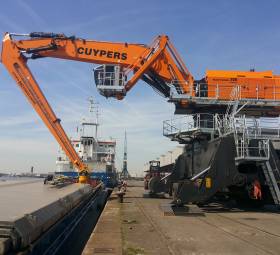Displaying items by tag: ABP Ports, Garston
ABP Invest In World's Largest Hydraulic Crane for Merseyside Port
#NewPortCranes - The Merseyside Port of Garston located south of Liverpool is one of five Associated British Ports (ABP) to have ordered new hydraulic cranes worth £6m across the UK ports group.
The five Mantsinen hydraulic cranes have been purchased by ABP also for their ports of Swansea, Wales and the English ports of Teignmouth, King’s Lynn and Ipswich (see report).
When the Mantsinen 200M is installed at the Port of Garston, this will be the world’s largest hydraulic crane. The 280 tonne crane will also be the first 200M to be located in the UK.
A 90M wheeled machine has been ordered for the Port of Teignmouth and two near-identical 120M will be delivered to the ports of Swansea and King’s Lynn. An order for a 95R tracked machine has been placed for the Port of Ipswich.
ABP Short Sea Ports Director Andrew Harston said: “ABP is dedicated to putting our customers first. That is why we are continuing to invest in brand-new equipment and technology to ensure we can offer our customers the highest possible standards of service and innovative solutions.
“We have been pleased to work with Cooper Specialised Handling. Each port has its own handling needs dependent on vessel sizes, load commodities and in some cases, very specific ground loading requirements.”
Tony Rooney, Managing Director of Cooper Specialised Handling, was keen to clarify the methodology of the process, saying: “This wasn’t a single contract for five machines, but rather five individual contracts each involving the provision of one crane.
“The five ABP sites had complete freedom of choice in terms of their handling solution and we are delighted that, completely independently, each port selected Mantsinen as its preferred equipment.”
Cooper will begin delivering the cranes from next month.
























































